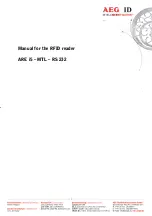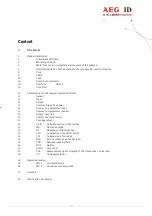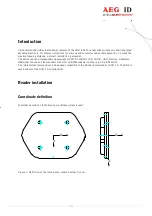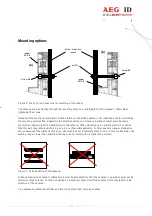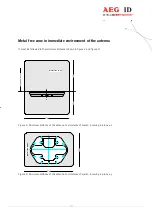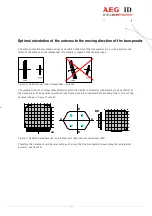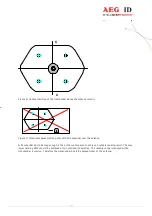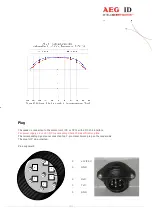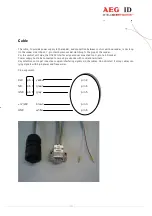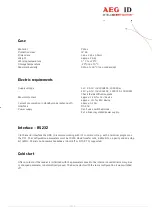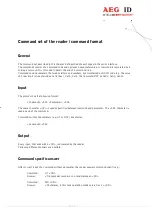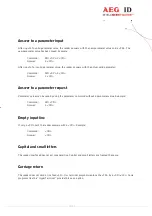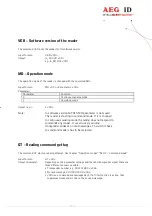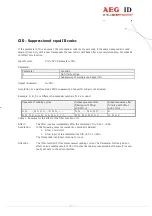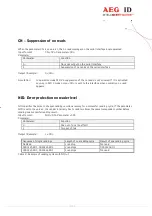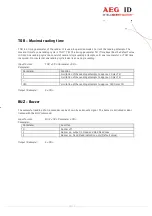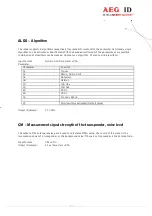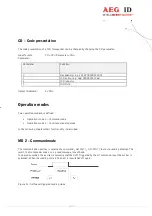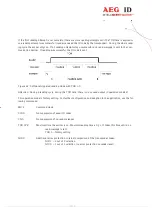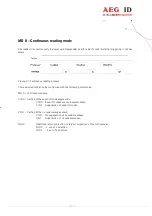
--------------------------------------------------------------------------14/21------------------------------------------------------------------------------------
CID – Suppression of equal ID codes
If the parameter CID is on value 1 the transponder code is only sent once, if the same transponder is read
several times. Only with a new transponder the new code is sent back after a successful reading. No reads do
not affect this function.
Input format:
CID <SP> Parameter <CR>
Parameter:
Parameter
Function
0
No filter function
1
Suppression of multiple read equal IDs
Output (Example):
0 <CR>
Annotation: In operation mode MD 2 suppression of equal ID codes is not allowed.
Example: A, B, C are different transponder numbers, N is a no read:
Sequence of reading cycles
Output sequence after
filtering with CN=0
and CID =1
Output sequence after
filtering with CN=1
and CID =1
N, N, ......,N, A, A, A, ....A, N,N, .........
N, N, ......,N, A, N, N, .......
A
N. N, N, A, A, A, N, A, A, B, A, C, C, C, .......
N. N, N, A, N, B, A, C, .....
A, B, A, C
Table 1: Example for the effect of the filter function CID
Effect:
The filter is active immediately after the command CID <SP> 1 <CR>.
Annotation:
In the following cases the comparison number is deleted:
•
After a cold start.
•
After input of the command line CID <SP> 1 <CR>.
The transponder read next is shown for sure.
Attention:
The filter function CID analyzes several reading cycles. The Parameter NID only has an
effect on one reading result. With CID active the reading is executed but the result is even-
tually not sent to the serial interface.

